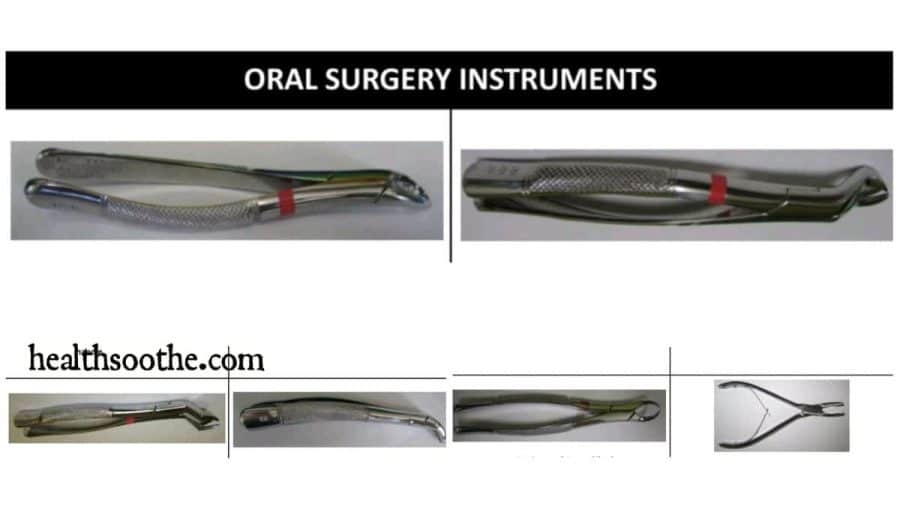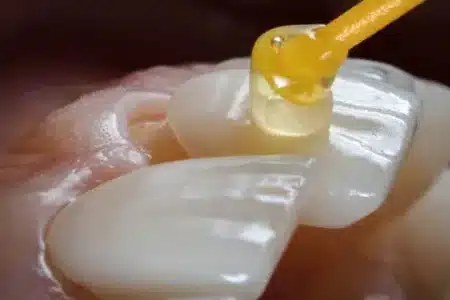As the dental profession evolves, there is an increasing demand for supplementary material that can keep up with advancing trends. ‘Hands-on’ practical experience is essential for anyone in the dental profession, and this needs to be supplemented with written information to reinforce our practical experiences.
A dental surgery contains instruments and equipment of various shapes, sizes and functions. The most oral surgery instruments commonly used during the procedure are:
1. Oral Surgery Instrument: Straight Elevators

Uses: To loosen the tooth from periodontal ligaments before extraction. To separate and lift tooth from the socket.
Characteristics: Single-ended. Variety of sizes.
2. Oral Surgery Instrument: Periosteal Elevator
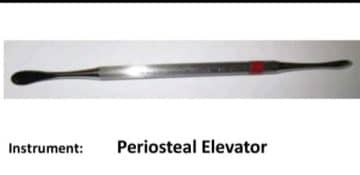
Uses: To provide indirect vision
To retract lips, cheeks, and a tongue To reflect light into the mouth
Characteristics: Accurate image from the flat surface mirrors, image magnified with concave mirrors.
3. Oral Surgery Instrument: Root-Tip Picks
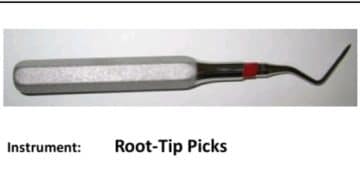
Uses: To lift and remove small root tips in difficult areas
Characteristics: Pointed at the working end. Straight or right-and-left pairs.
4. Oral Surgery Instrument: Root Elevators/ Cryers
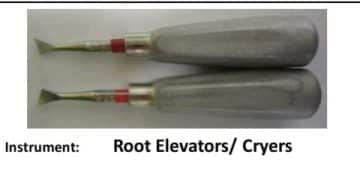
Uses: To loosen root. To separate and lift tooth from the socket. To use on posterior teeth
Characteristics: Single-ended. Can be right or left. Variety of sizes.
5. Oral Surgery Instrument: Root-Tip Elevators
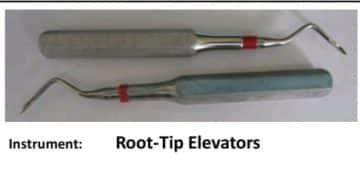
Uses: To lift and remove fragments of root
Characteristics: Single-ended. Rounded or pointed.
Straight or right-and-left pairs
6. Oral Surgery Instrument: Bone File

Uses: To remove or smooth edges of alveolar bone
Characteristics: Used in push-pull motion; straight- cut or cross-cut cutting end; a variety of sizes, angles, and shapes.
7.Oral Surgery Instrument: Maxillary Universal Forceps are also known as Cryer 150

Uses: To extract maxillary central, laterals, cuspids, premolars, and roots
Characteristics: Has straight handles or one curved handle
8. Oral Surgery Instrument: Maxillary Right Forceps

Uses: To extract the trifurcated maxillary right first or second molars
Characteristics: Has right-split beak to engage the lingual root
9. Dental Surgery Instrument: Maxillary Left Forceps
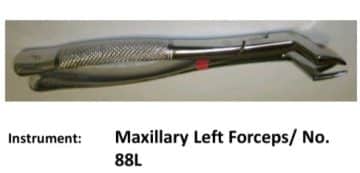
Uses: To extract trifurcated maxillary left first or second molars
Characteristics: Has left-split beak to engage the lingual root.
Related Tray Set-up
- Dental Amalgam tray set-up (Silver-Colored Dental Fillings)
- Dental tray setup for composite fillings
- CROWN PREP TRAY SET-UP INSTRUMENTS
10.Dental Surgery Instrument: Mandibular Universal Forceps
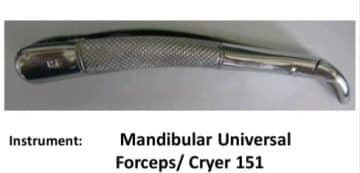
Uses: To extract mandibular central, laterals, cuspids, premolars, and roots
Characteristics: Has straight handles or one curved handle.
11. Dental Surgery Instrument: Universal Mandibular Forceps
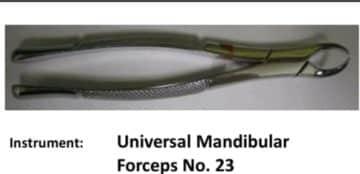
Uses: To extract mandibular first and second molars
Characteristics: Straight handles or one curved handle
12.Dental Surgery Instrument: Rongeur
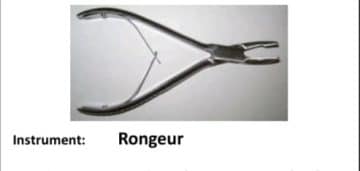
Uses: To trim and remove excess alveolar bone after extraction
Characteristics: Variety of sizes and angles.
13. Dental Surgery Instrument: Bone Chisel
Uses: To split or section a tooth for easier removal by tapping on the chisel with a mallet; to reshape or contour alveolar bone
Characteristics: Single-level chisel for contouring or removing alveolar bone; bilevel chisel for splitting teeth; a variety of sizes.
14. Oral Surgery Instrument: Surgical Curette
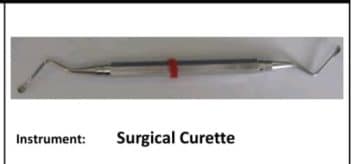
Uses: To remove debris or granulation tissue from surgical site; to remove a cyst from extraction site or surgical site; to use for gross tissue debridement.
Characteristics: Various sizes and shapes; single or double-ended.
15. Oral Surgery Instrument: Surgical Evacuation Tip
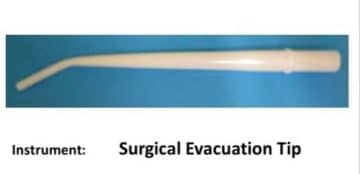
Uses: To evacuate fluid from the oral cavity and surgical sites
Characteristics: Stainless steel, autoclavable plastic, or disposable plastic; tips narrow to accommodate surgical site; attaches to tubing on dental unit.
Extraction Tray set-up

- Cotton Rolls
- Topical Anesthetic
- 2×2 Gauzes
- Needle (Short for Maxillary; Long for Mandibular)
- Anesthetic Carpules
- Syringe
- Mouth Mirror
- Explorer/ Perioprobe
- Small Elevator
- Large Elevator
- Periosteal
- Surgical Curette
- Forcep:
- Teeth #1-3: 88R
- Teeth #4-13: 150
- Teeth #14-16: 88L
- Teeth #17-19: Cowhorn 23
- Teeth #20-29: 151
- Teeth #30-32: Cowhorn 23
Suture removal tray set-up

- Explorer/ Perioprobe Suture Scissors
- Mouth Mirror Cotton Rolls
- Cotton Forcep 6. 2×2 Gauzes
- Suture Scissors
- Mouth Mirror
- Cotton Rolls
- 2×2 Gauzes
Suture tray set-up

- Suture and Needle
- Suture Scissors
- 2×2 Gauze Cotton Forcep
- Cotton Rolls Mouth Mirror
- Hemostat
- Suture Scissors
- Mouth Mirror.
This guide is for students working and studying in the dental profession. It may be used as a study aid or as a reference guide.
RELATED READING


